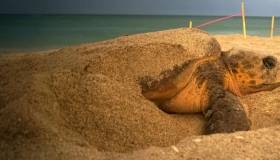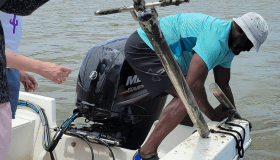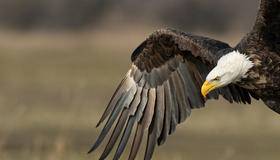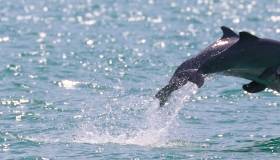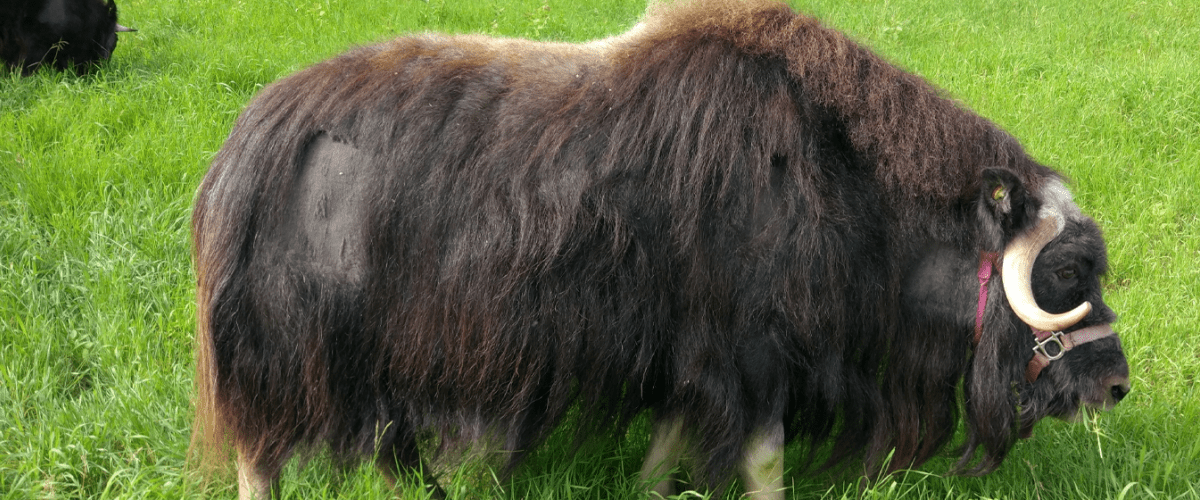
February 21, 2019 – As documented climate change in the Arctic accelerates, one of the ecosystem’s most iconic animals is facing a threat to its survival. Musk oxen are losing ground due to climate gentrification in two of their island homes, where herd sizes have dropped by 80 percent in the last decade, tracking alongside changes to their environment.
To better understand how climate is affecting musk ox health, Morris Animal Foundation-funded researchers from the University of Calgary are monitoring stress hormone levels in the animals. Researchers hope to determine if these hormones can be a reliable indicator of degrees of stress and overall animal health – valuable information to have as wildlife managers monitor herd health and try to develop effective management strategies.
“Musk oxen are a unique species that have lived in the Arctic for thousands of years, surviving the last ice age,” said Dr. Juliette Di Francesco, a veterinarian and doctoral student at the University of Calgary. “They’re critically important in the north culturally, ecologically and economically, and need to be conserved.”
Musk oxen are one of only two ungulate species in their ecosystem, along with caribou, and provide a food source for bears, wolves and the local Inuit communities. While populations on mainland Canada are stable, herd sizes on Victoria Island and Banks Island, two of the country’s largest islands, are dramatically declining.
Researchers believe the decline is due to multiple stressors in the rapidly changing Arctic, with more severe weather extremes and disease emergence. Climate warming has, for example, enabled parasites such as lungworms to expand their range in the musk oxen environment. Winter food sources also are compromised. The musk oxen must dig through snow to graze on plants, a task more difficult when freezing rain hardens the snowpack.
The impact of these stressors is currently difficult to evaluate, leading to the University of Calgary team working to develop reliable tools for monitoring health. To validate the use of stress hormones as such tools, the researchers are measuring the experimental increase of stress hormones, also known as glucocorticoids (GC), in musk ox hair and feces.
To do this, the team is working with a captive herd at the University of Alaska Fairbanks Large Animal Research Station. They divided the herd into two groups, one control and the other treatment, with each receiving weekly injections over a period of five weeks. The control group received saline solution, while the treatment group received a slow release formulation of adrenocorticotropic hormone (ACTH), which stimulates the production of glucocorticoids.
Researchers shaved each musk ox at the neck, shoulder and rump before and after the injections, and collected fecal samples to see if the team could detect the increase in circulating stress levels in the hair and feces. This year, they also will measure stress hormone levels in the undercoat hair before and after it is shed to evaluate the stability of GCs after they are deposited. The goal is to establish the patterns of deposition and stability of stress hormones in the hair and feces of musk oxen, to then reliably interpret levels in samples from wild musk oxen.
The musk oxen are generally good sports about the project, said Dr. Di Francesco, though she admitted fecal collection was a challenge. To assure they collected samples from the right musk ox, researchers had to wait hours on end in the dark, bitter cold for them to poop. She said she did eventually learn a helpful technique, though.
“We discovered many of them poop right after they wake up, so we let them sleep for at least 30 minutes and then would get them up to speed up the process,” she laughed. “It took a lot of patience and crossing of fingers, but it was worth it.”
Midway through the study, Dr. Di Francesco is optimistic about the team’s results and hopes their findings will lead to better conservation management strategies for musk oxen, and help preserve a future for them in the Arctic landscape.

